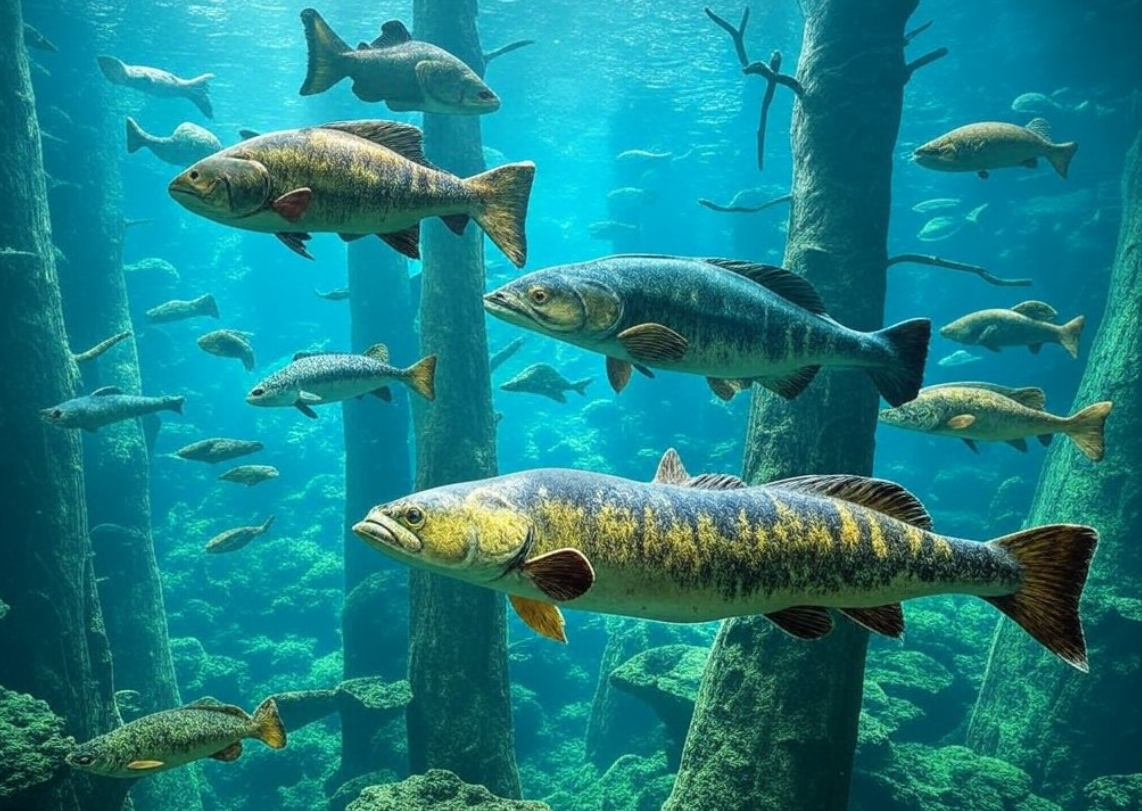Table of Contents
![]()
Introduction
The fascination with ancient life has led enthusiasts to ponder the possibility of recreating prehistoric aquatic environments in modern-day aquariums. However, the task of maintaining an aquarium for prehistoric fish comes with unique and complex challenges. Here we explore the hurdles one must overcome to achieve this ambitious goal.
Species Selection
Extinction and Availability
The primary challenge begins with species selection. Most fish from prehistoric times are extinct, leaving us with fossils or, at best, modern descendants. Identifying living relatives like the coelacanth or lungfish, which have changed little since prehistoric times, involves significant research. Moreover, acquiring these species can be complicated due to their rarity and legal restrictions on trade.
Adaptation to Modern Conditions
Even with living relatives, these species might not perfectly mimic their ancient ancestors in behavior or biological systems. Adapting these fish to today’s conditions while trying to simulate their past environments is a delicate balance.
Environmental Replication
Water Conditions
Chemistry
Prehistoric oceans or rivers had different chemical compositions. For instance, ancient seas might have had higher salinity levels or different pH and hardness than today’s water. Replicating these conditions requires precise control over aquarium water chemistry.
Temperature
Prehistoric climates could have been significantly different, impacting the thermal preferences of ancient fish. Modern aquaria must simulate these temperature ranges, which might not align with the comfort of staff or visitors.
Geological Features
Setting up an environment that matches geological records involves creating appropriate substrates, rock formations, and perhaps even plant life that would have been present millions of years ago. This not only serves aesthetic purposes but is crucial for the fish’s natural behavior.
Biological Considerations
Nutrition
The diet of prehistoric fish isn’t well-documented, and modern fish food might not suffice. There’s a need to understand and possibly cultivate food sources that these fish would have consumed, which could include live prey or specific types of vegetation.
Disease and Health
Modern diseases might affect ancient species in unknown ways, and there’s little to no historical data on how to treat these conditions. The immune responses of these fish could be vastly different from what we observe today, complicating health management.
Aquarium Setup
Size and Space
Many prehistoric fish were large; for example, some ancient lungfish could grow much larger than their modern counterparts. This necessitates aquariums with ample space for swimming and territorial behaviors.
Filtration and Circulation
Ancient aquatic environments had different water flow and quality. Modern filtration systems need to be adjusted to not only clean but also maintain conditions that might include beneficial bacteria or nutrients that would have been present in prehistoric times.
Behavioral Challenges
Social Structures
Understanding whether these fish were solitary, lived in schools, or had complex social hierarchies affects how they should be housed. Aggression or territorial behaviors can be more pronounced or different from contemporary species.
Reproduction
Breeding prehistoric fish involves significant unknowns. Data on reproductive behaviors, mating rituals, or even the viability of modern descendants breeding successfully in conditions reminiscent of ancient times is scarce.
Legal and Ethical Issues
Conservation
If dealing with species that are rare or considered living fossils, there are conservation implications to consider. Ensuring that aquarium practices do not negatively impact wild populations is paramount.
Education vs. Entertainment
There’s a fine line between educating the public about prehistoric life and potentially misrepresenting or exploiting these species for entertainment.
Maintenance and Longevity
Lifespan Management
Some prehistoric species might have lifespans that are significantly different from those of modern fish. Managing these through their life cycles poses unique challenges.
Sustainability
Maintaining an aquarium that simulates ancient life over the long term requires sustainable practices, both for the well-being of the fish and for minimizing the environmental footprint of the setup.
Educational Value
Public Perception and Education
An aquarium featuring prehistoric fish should serve as an educational tool. It’s essential to communicate the evolutionary history, biological adaptations, and the conservation status of these species to visitors or owners.
Conclusion
Keeping a prehistoric fish aquarium is not just an exercise in nostalgia or spectacle; it’s a scientific endeavor that demands respect for both the past and the present state of our aquatic ecosystems. It challenges us to think deeply about biology, ecology, and the ethics of conservation, pushing the boundaries of what aquarium science can achieve.
Share This





Be the first to comment